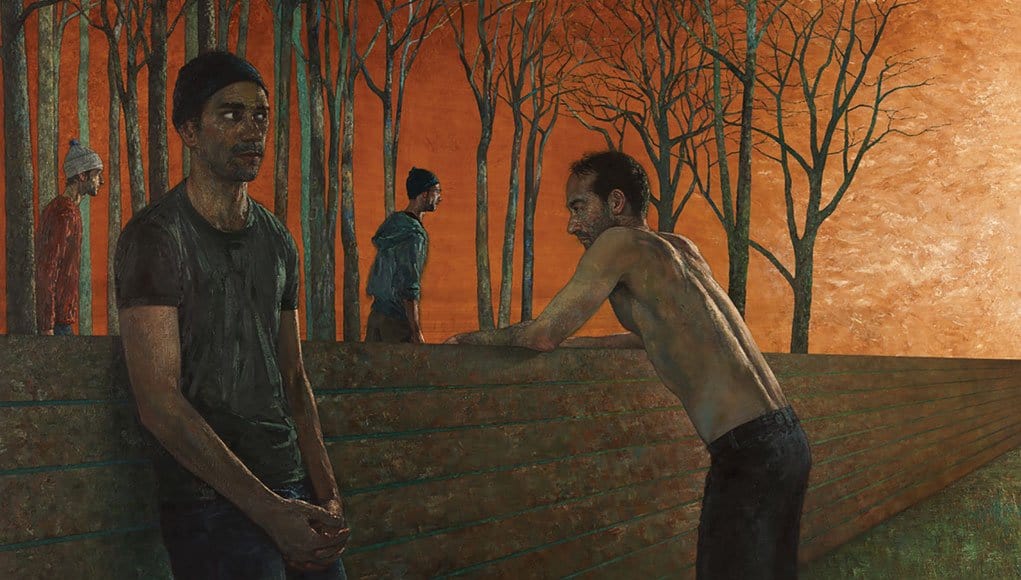by Steve Desroches
Top Image: Woodsmen (Heading Out), oil on wood panel, 40×72 in, 2012
Two men lay on their backs on what looks like a white brick road with blue and green mortar holding it all together. One man has his eyes closed, but his posture doesn’t communicate that he’s sleeping. The other man is in a relaxed repose with a content expression. Then again it could have a touch of melancholy. The light implies they’re in direct sun, though its setting. Or perhaps it’s artificial light, since the shadows suggest a touch of levitation, but nothing magical, just an illusion. With very little exertion and just the slightest extension, the two men could touch. But there’s a chance they aren’t even in the same physical space. They may just be manifesting the image of each other in a daydream and this image is of a place where fantasy goes to take a more literal form.
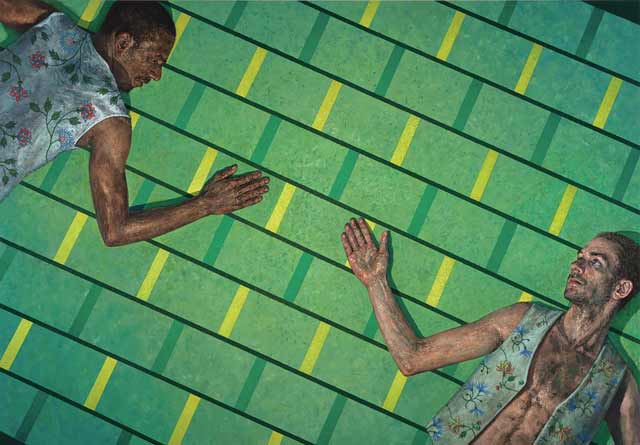
Each painting by Forrest Williams on the walls of AMP, the east end gallery creation of Debbie Nadolney, is a visionary rabbit hole with its own strong gravitational pull of contemplation. At first Williams is understandably reticent discussing any particular piece, and certainly the whole show, which is a retrospective of his work from the 1990s until now. He’s not being evasive, but rather, as is the case with most artists, he believes what’s to be said is in the work. But there’s more. In the true firmament of creation, once something is brought into the world, even if by your own mind and hands, you lose control almost immediately. It has its own life now, its own story.
“Nothing is set in stone,” says Williams. “These places exist in my mind. I think of them as more psychological than an actual place. The places don’t actually exist; they’re more of a composite. These aren’t portraits either.”
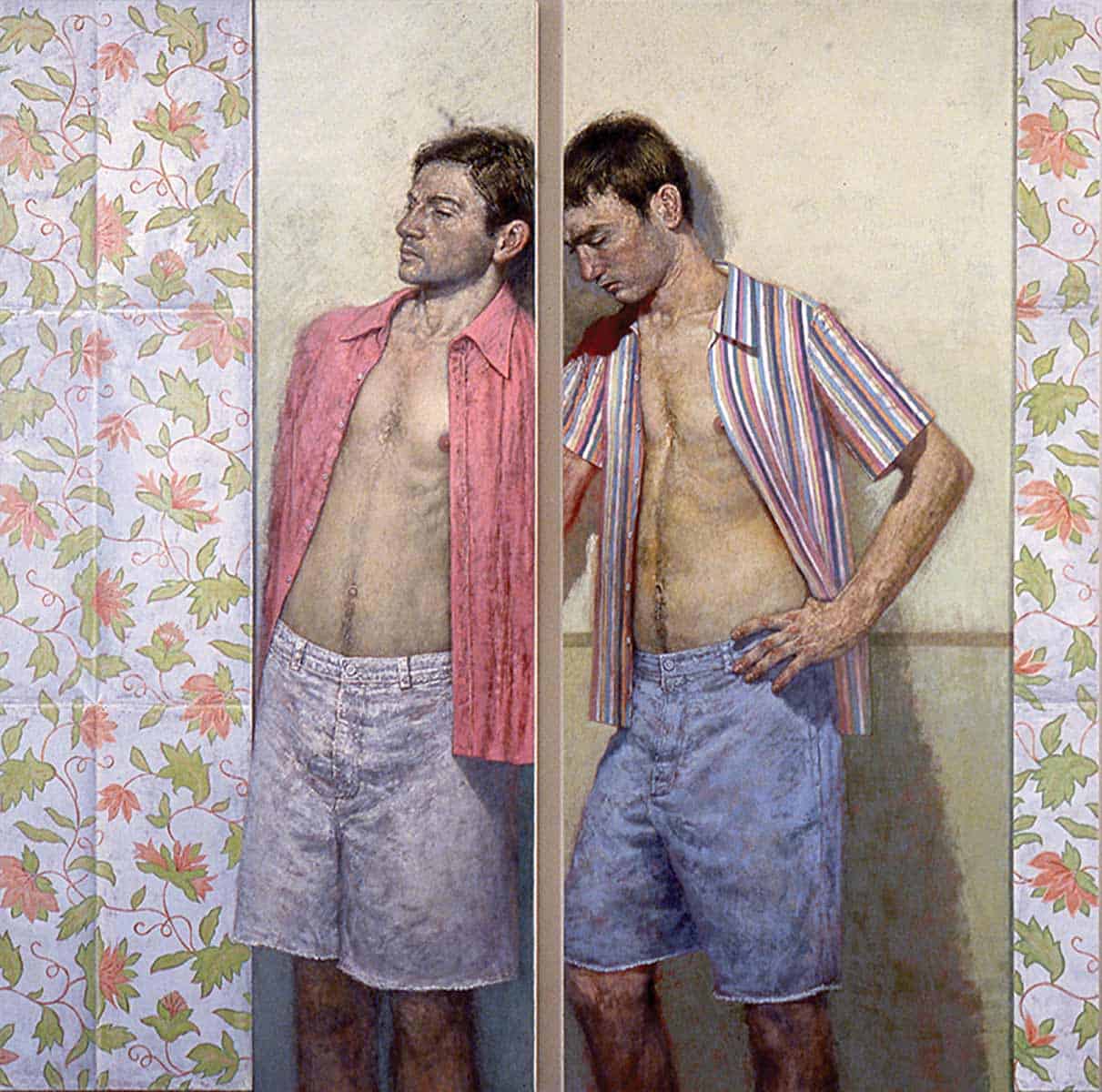
The impetus for the piece in question wasn’t the models he sketched, but rather a book featuring design of 18th-century English teapots and cups. The pattern behind the two men came from this very specific document of a very specific history of design. The imagery stuck in Williams’ mind, and out of this came the artistic narrative that fills the canvas. Williams’ work is akin to a stage, he explains. Yes, the theater is a real place, but imaginary ones are created on the stage. Yes, the actors are real, but the characters and emotions they conjure are works of imagination. There’s connection, yet isolation. Intimacy, but an aura of aloofness, even distraction or indifference. It’s all the terrain of the inner mind—first Williams’ and then ours as we translate into our own language what story is unfolding before us.
“There’s ambiguity there,” says Williams. “It gives the viewer some room for them to experience it on their own terms.”
Moving up to the second level of the gallery, an autumnal scene with a flaming orange sky blazes across the wall. Nadolney emerges, as she can’t resist sharing the excitement of the work, and this show. For nearly a decade she’s been familiar with Williams’ work.
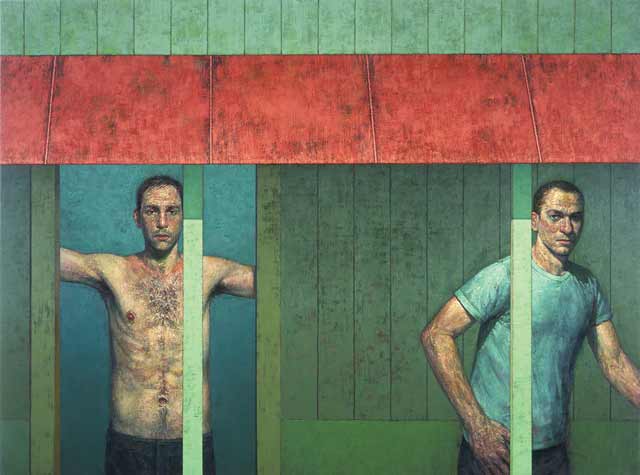
“I love the open narrative,” says Nadolney. “There’s so many to take in the work. But the openness in each painting opens up a new experience each time you look at it.”
Nadolney and Williams discuss, and at times thoughtfully debate each piece. A large work on the back wall features a naked man on what looks like the beach, familiar enough to be Herring Cove, but not literally so. A white geometric shape is to the man’s right. It could be a lighthouse. He gazes in the other direction. Williams jokes that he and the model that’s the subject said the man is patiently waiting for his pot dealer to show. There’s another a wide expanse occupying the gallery space of two naked men both looking in the same direction, but appearing to ignore each other. Their postures are neither erotic nor exhibitionistic, rather they exhibit that familial nudity that many gay men embrace, a type of Terrence McNally nudity. In his play Love! Valor! Compassion! the nudity of the gay friends at the lake feels natural and authentic to many gay audience members. It’s ultimately a camaraderie. With Williams, a gay man, he paints men and often there is nudity, and when there is not there is a recognizable gay viewpoint. That element and voice can be difficult to maneuver in an art world and culture that still has being straight as one of its many norms. Any viewpoint that deviates can be dismissed with a qualifier, like “gay art” as its feels foreign and a challenge to the establishment or majority thought. But Nadolney points out that Williams’ work is appreciated and popular across gender and sexuality. He manifests the basic humanity in his subjects and the story within, as well as revels in creating an air of mystery. He paints what he knows, men, often gay men, and their experiences. But the strength of the work clears the hurdles of categories meant to define, sometimes to the point of limitation, and differentiate, at times to segregate. Perhaps above all else it’s the relationship with the unseen that makes these paintings able to strike the raw nerve within anyone.
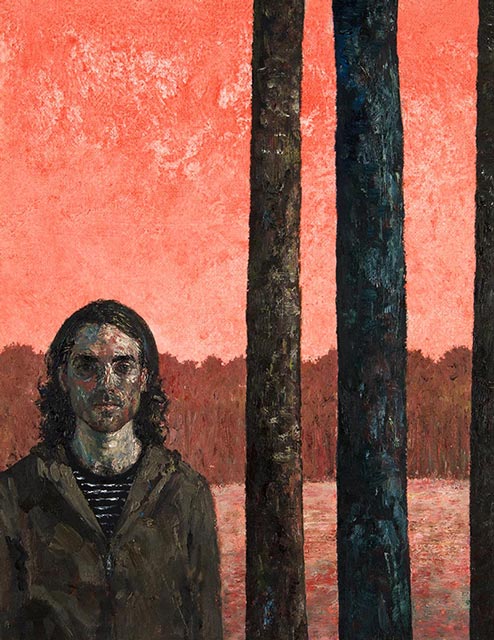
“I do think there’s secrets embedded in the paintings,” says Williams. “I don’t think the figures necessarily connect. There’s an isolation from each other. There’s something out of the view in the painting, from outside the edge of the canvas. An absent presence. It’s the middle ground of competing emotions. Finding that as a painter, that’s the sweet spot.”
Forrest Williams: A Retrospective: 1990s to Present is on exhibition at AMP, 432 Commercial St., Provincetown through September 15. The work of sculptor Rick Wrigley is also concurrently on display. For more information call 646.298.9258 or visit artmarketprovincetown.com.

